Papers by Doç.Dr. Cengiz Kahraman
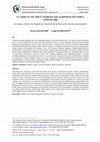
Elektronik Sosyal Bilimler Dergisi, 2020
Limanlar, geçmiş çağlardan bu yana bulunduğu şehirlerin ekonomik gelişiminde çok önemli işlevler ... more Limanlar, geçmiş çağlardan bu yana bulunduğu şehirlerin ekonomik gelişiminde çok önemli işlevler üstlenmiş ticari ve sosyal ünitelerdir. Bir liman şehri olan İstanbul’un ticari ve beşeri hayatında denizyolu ulaştırmasının dolayısıyla limancılığın ayrı bir yeri vardır. Tarihsel süreçte, -sırasıyla- Roma, Bizans ve Osmanlı İmparatorluğu gibi büyük medeniyetlere başkentlik yapan İstanbul, coğrafi ve stratejik konumu nedeniyle dünya ticaretinde her zaman önemli merkezlerden biri olmuştur. Asya ile Avrupa’yı birbirine bağlayan, Akdeniz-Ege-Karadeniz aksında kritik ve alternatifsiz bir geçiş olan doğal bir boğaza sahip olan İstanbul; tarih boyunca doğal bir liman olma işlevini sürdürmüştür. İstanbul’un çok yönlü hinterlandı ve dağıtım özelliği, hem Karadeniz Havzası hem de Ege/Akdeniz Havzası’na açılan bir liman şehri olmasını sağlamıştır. Bu çalışmada İstanbul il sınırları içerisinde günümüzde faaliyet gösteren ticaret ve yolcu limanları fonksiyonlarına göre sınıflandırılmış, İstanbul ve...
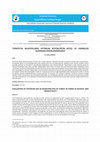
Doğu Coğrafya Dergisi, 2018
Yerel hizmetlerin görülmesinden sorumlu olan mahalli idareler Türkiye'de kanunlar tarafından türl... more Yerel hizmetlerin görülmesinden sorumlu olan mahalli idareler Türkiye'de kanunlar tarafından türlerine göre ayrılmaktadır. En kapsamlı görev ve sorumluluğa sahip olan mahalli idare türü ise belediyelerdir. Belediye türleri hizmet verdikleri alanın genişliği, gelirlerin ve hizmetlerin çeşitliliği gibi değişkenlere göre belirlenmektedir. Belediyelerin çeşitli türlerde olması bir optimal büyüklüğe sahip olma arayışıdır. Belediyelerin farklı nüfus ve hizmet alanı gibi konularda çeşitli ölçeklerde hizmet vermesinin hizmeti veren belediyeler açısından bir takım mali sonuçları bulunmaktadır. Harcamalarını başta vergiler ile finanse eden belediyelerin mümkün olduğu kadar az mali kaynakla daha fazla hizmet vermesi vatandaşlar tarafından beklenmektedir. Bu anlamda Türkiye'deki belediyelerin türlerine ve dolayısıyla hizmet ölçeği büyüklüğüne göre harcamalarını etkin ve verimli bir şekilde yapması değerlendirmeye alınması gereken bir konudur. Bu nedenle çalışmada Türkiye'de bulunan mahalli idareler sistemi içerisinde yer alan büyükşehir belediyeleri ve il belediyeleri bütçeleri ve devamında harcamalarında verimlilik açısından kıyaslanacak ve bu kıyaslama ile belediyelerde optimum büyüklük konusunda çeşitli açılardan değerlendirmelerde bulunulacaktır.
PEOPLE: International Journal of Social Sciences, 2018
More passengers have come to use airplanes in parallel with the developing aircraft technology. T... more More passengers have come to use airplanes in parallel with the developing aircraft technology. The remarkable and rapid development of commercial airlines after the World War II positively affected the costs to turn airborne transportation into a global activity taken up by masses. Doubtlessly, immense is the effect of developing airborne transportation on the emergence and dissemination of "globalization" herein.

Uludağ Üniversitesi Fen-Edebiyat Fakültesi Sosyal Bilimler Dergisi, 2019
Geçmiş çağlardan bu yana birçok uygarlığa ev sahipliği yapan Kuşadası Körfezi kıyıları, ülkemizin... more Geçmiş çağlardan bu yana birçok uygarlığa ev sahipliği yapan Kuşadası Körfezi kıyıları, ülkemizin en önemli turizm merkezlerinden biri olarak ön plana çıkmaktadır. Ekonomik faaliyetlerin çeşitliliğine imkân veren doğal şartların varlığı, bölgenin önemini bir kat daha arttırmaktadır. Bölgede ikinci kuşak olarak değerlendirdiğimiz kıyı art bölgelerinde devam eden tarımsal faaliyetler, turizm baskısı nedeniyle günden güne azalmaktadır Kuşadası Körfezi çevresinde tarımsal faaliyetler yakın geçmişte önemli bir ekonomik faaliyet durumundayken, turizm faaliyetlerinin kıyı boyunca gelişme göstermesi ve kentleşme olgusunun hız kazanmasıyla, tarım sahaları iç bölgelere doğru kaymış, tarım sahalarında önemli bir azalma meydana gelmiştir. Bu çalışmada Kuşadası Körfezi çevresinde ziraat hayatı için önem arz eden başlıca iklim verileri incelenerek, Kuşadası su bilançosu çıkarılmış; körfez arazi kullanımı ve tarımsal özellikler analiz edilmiştir.
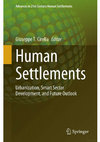
Human Settlements, 2022
Today, human activities are developing at a drastic speed with little limitation. Excessive devel... more Today, human activities are developing at a drastic speed with little limitation. Excessive development can be problematic to human health as well as reduce the sustainability of natural resources. At present, the COVID-19 pandemic has affected the whole world and adversely has impacted a broad range of human activities, including the economy, agriculture, tourism, and transportation. The excessive increase from globalization, unplanned urbanization, and the destruction of nature (i.e., due to ongoing human activity) have been partially to blame for the current state of the planet. The human population has tripled over the last 70 years. In addition, existing agricultural areas of the world yield lower rates-especially in underdeveloped or developing countries. Moreover, climate change has affected agricultural areas and caused a shrinkage in production patterns. As a result, an increasing population has decreased access to their cultural foods, leaving them with few options, and these unhealthy dietary options frame detrimental long-term concerns. As a result, the human-nature relationship must be considered and decisions made. In sensitive areas, especially in mountainous regions, tropical forests, deserts, and glaciers, human habitation and human and economic activity should be limited. In this chapter, natural and human dynamics are examined by analyzing current changes and future population trends in light of the COVID-19 pandemic. A critical question that should be asked is what can be done regarding environmental sustainability during the crisis and what lessons will be learnt to best apply them in a post-COVID-19 world?

Advances in 21st Century Human Settlements book series (ACHS) Springer, 2021
Today, human activities are developing at a drastic speed with little limitation. Excessive devel... more Today, human activities are developing at a drastic speed with little limitation. Excessive development can be problematic to human health as well as reduce the sustainability of natural resources. At present, the COVID-19 pandemic has affected the whole world and adversely has impacted a broad range of human activities, including the economy, agriculture, tourism, and transportation. The excessive increase from globalization, unplanned urbanization, and the destruction of nature (i.e., due to ongoing human activity) have been partially to blame for the current state of the planet. The human population has tripled over the last 70 years. In addition, existing agricultural areas of the world yield lower rates-especially in underdeveloped or developing countries. Moreover, climate change has affected agricultural areas and caused a shrinkage in production patterns. As a result, an increasing population has decreased access to their cultural foods, leaving them with few options, and these unhealthy dietary options frame detrimental long-term concerns. As a result, the human-nature relationship must be considered and decisions made. In sensitive areas, especially in mountainous regions, tropical forests, deserts, and glaciers, human habitation and human and economic activity should be limited. In this chapter, natural and human dynamics are examined by analyzing current changes and future population trends in light of the COVID-19 pandemic. A critical question that should be asked is what can be done regarding environmental sustainability during the crisis and what lessons will be learnt to best apply them in a post-COVID-19 world?
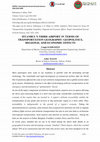
More passengers have come to use airplanes in parallel with the developing aircraft technology. T... more More passengers have come to use airplanes in parallel with the developing aircraft technology. The remarkable and rapid development of commercial airlines after the World War II positively affected the costs to turn airborne transportation into a global activity taken up by masses. Doubtlessly, immense is the effect of developing airborne transportation on the emergence and dissemination of " globalization " herein. As one of the major components of airborne transportation, airports serve as spaces allowing for direct and connecting flights in a short time and make considerable contributions to the economy of the country they are located in. A region's airborne accessibility enables the transportation of any goods and services to that particular region in a short while. Thus, accessibility is indispensable to the growth of a region's economy. Taking the abovementioned as a premise, some airports have acquired new functions not only to regulate ordinary flight services and airborne transportation but also to turn into hubs to orchestrate interregional transportation. Such airports also function as tourism embassies. Among the hubs are the airports in Dubai, Bangkok, Frankfurt, London, Paris, and New York. In recent years, Istanbul has set out to be listed among the above hubs thanks to its geographical location and developing economy. Istanbul's Third Airport, which has reached almost 70% of its construction and will come into service soon, has been designed to be the largest airport of the world. Istanbul is distinguished from the metropolitans listed above for the historical role it played and the diversity of its historical and cultural landmarks. Throughout its history of around 8000 years, Istanbul has served as a capital to the Roman, Byzantine, and Ottoman Empires, which exerted substantial influences on the world history, and is teemed with cultural heritage of these civilizations. Every year, the city hosts some 12 million tourists. The present study discusses the probable global effects of Istanbul's Third Airport under construction in terms of transportation geography and its geopolitical, regional, and economic effects in consideration of its projected mission.

Cruising is a recently developing tourism type incorporating several recreational functions. Gene... more Cruising is a recently developing tourism type incorporating several recreational functions. Generally speaking, it is based on the idea of visiting predetermined destinations and having a holiday during the trip. Lately, it has globally taken huge leaps and become an indispensable part of sea tourism. Accordingly, it has developed in Turkey as well. The Kusadasi Port is among the prominent ports of cruising. Recently, it has become Turkey's biggest port and come to solely serve cruise tourism because of the functional developments in the region as of the 1960s. The port is located in the northern part of a headland extending into the sea from the middle of the Gulf of Kusadasi. One of the reasons for the vast interest of tourism agencies in the port is the presence of historical and religious places such as Ephesus, St. Mary's House, St. John's Cathedral, Miletus, and Priene. The examination of Turkish ports serving cruises reveals that services offered at these ports fall short of satisfying the need of cruise tourism. Globally, cruise ports boost their appeal with many social and cultural activities and facilities. It is very important for the promotion of Turkey and the development of tourism in Turkey to operationalize the ports with historical and cultural potential, especially in the Aegean and Mediterranean Regions. This study offers an overview of the cruise ports in Turkey and makes suggestions to upgrade cruise tourism to a satisfactory level by disclosing historical development, functionality, and problems of the Kusadasi Port, the most preferred port in Turkey.
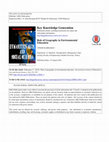
the science which studies the human-space interaction according to the principle of cause
and eff... more the science which studies the human-space interaction according to the principle of cause
and effect, and it deals with space and human who uses it for economic purposes. What really matters in this
human-environment interaction is that benefits should become permanent and sustainable. This phenomenon is extremely
important for future generations if we desire them to continue to benefit from the geographical environment. When we look
at the current perception of the environment and the related application, the present state is not very encouraging. I’ll give
you a few examples; field grabbing race in polar regions under the pretext of researching, construction of technological
cities in desert areas, destruction of tropical forests for agriculture and settlement purposes, oil drilling practices in the
open seas, increasing presence of nuclear facilities and so on. Such human activities lead to irreversible damages to the
natural environment. Also due to misapplication of human activities such as settlement and industrialization, mankind
confronts such an unhealthy environment where the soil lost all contact with the sky, global warming, extreme pollution
in the atmosphere and hydrographic elements. With an effective environmental education, it is possible to prevent the
excessive and improper use which nature cannot compensate anymore. Ever-increasing world population creates the
biggest problem that prevents sustainable use of scarce resources. Undoubtedly protecting the natural environment
does not mean disuse. In this respect, the question of how to use the natural environment, how to plan and how to
ensure environmental awareness in large populations come to the fore. In order to answer these questions it is necessary
to know the structure and the properties of the natural environment for the first place. At this point, the place of
geography comes to the fore in an effective environmental education. This study emphasizes effective environmental
education, and attempts to explain the functions of the geography and how it should be utilized in environmental education.
⃝c 2016 KKG Publications.
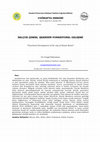
Anadolu'nun batı kıyılarında, en geniş körfezlerden biri olan Kuşadası Körfezi'nin orta bölümünde... more Anadolu'nun batı kıyılarında, en geniş körfezlerden biri olan Kuşadası Körfezi'nin orta bölümünde yer alan, Selçuk, tarihte birçok medeniyete ev sahipliği yapmış; önemli kültürel ve dini kaynaklara sahip bir şehirdir. Efes antik şehrinin ve Meryemana Evi'nin şehrin kültürel hayatı üzerindeki etkisi oldukça büyüktür. Ayrıca, çevresindeki en büyük turizm merkezi olan Kuşadası'na olan yakınlığı nedeniyle deniz ve kültür turizminin bir kavşak noktası olmuştur. Bölgede yerleşme antik döneme kadar uzanmaktadır. Küçük Menderes delta alanının güneydoğusunda bir tepenin yamaçlarında kurulan Selçuk, geçmişten günümüze kadar gerek beşeri olaylar gerekse fiziki şartlar nedeniyle birçok kez yer değiştirmiştir. Günümüzdeki Selçuk şehrinin asıl gelişimi Türk dönemi ile birlikte olmuştur. Geçmişte bir kıyı şehri olarak hayat bulan Selçuk'un, Küçük Menderes nehrinin getirdiği alüvyonlarla denizle bağlantısı kesilmiş, bugün kıyıdan 8 km kadar içeride kalmıştır. Gitgide deniz bağlantısını ve dolayısıyla liman şehri özelliğini yitiren Selçuk, deniz ticareti fonksiyonunu, Ortaçağda Venediklilerin verdiği isimle "Scala Nova" ("Yeni İskele") olarak bilinen Kuşadası'na kaptırarak eski ekonomik önemini kaybetmiş ve sönükleşmiştir. Şehirde 2010 ADNKS'ne göre 5 mahallede toplam 27880 kişi yaşamaktadır. İzmir-Aydın karayolu ve demiryolu üzerindeki şehir, özellikle yaz mevsiminde kültür ve inanç turizmi nedeniyle büyük bir canlılık kazanmaktadır. Bu makalede Selçuk şehrinin antik dönemden günümüze yerleşme tarihi ve nüfus özellikleri açıklanmaya çalışılmış, şehrin sosyo-kültürel gelişmesine yönelik önerilere yer verilmiştir.
Conference Presentations by Doç.Dr. Cengiz Kahraman
Books by Doç.Dr. Cengiz Kahraman
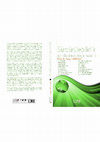
Dünya dinamiklerini sistematik bir şekilde anlama ve öğrenme süreci olan bilim, elde ettiği sonuç... more Dünya dinamiklerini sistematik bir şekilde anlama ve öğrenme süreci olan bilim, elde ettiği sonuçları insanlığın hizmetine sunarak; geniş manada medeniyetlerin gelişmesini sağlamakta, özelde ise insan yaşamını kolaylaştırmaktadır. Bilimin bu misyonu, bilimsel çalışmaların ve araştırmaların önemini birkez daha vurgulamaktadır. Günümüzde kontrolsüzce artan dünya nüfusu ve sanayileşme, sınırlı olan doğal kaynaklar üzerinde beşeri baskıları arttırmış ve birçok çevresel sorunu ortaya çıkarmıştır. Özellikle son yüzyılda görülen bu hızlı değişime yanıt vermek, başta küresel ısınma ve etkileri olmak üzere, çevre kirliliği, ormansızlaşma, tarım alanlarının tahribi, sağlıklı gıda ve suya erişim, ekolojik sorunlar, salgın hastalıklar vb. sorunları en aza indirebilmek için bilimsel araştırmalar kilit rol oynamaktadır. Gelecek nesillerin kendi ihtiyaçlarını karşılama yeteneğinden ödün vermeden insanların günümüzdeki ihtiyaçlarını karşılama kapasitesi olarak tanımlanabilecek sürdürülebilir kalkınmada, doğal kaynakların sürdürülebilirliği ana ekseni oluşturmaktadır. Bilindiği gibi sürdürülebilirliğin klasik bileşenleri ekonomi, çevre ve toplumdur. Bu temel bileşenlere yeni halkalar ekleyebilmek, fen, mühendislik, sağlık ve sosyal bilimler alanlarını kapsayacak şekilde geniş fikir sentezlerinin oluşturulması, sürdürülebilirlik adına yeni ufukların doğmasını sağlayacaktır. Artan kaynak tehditlerine karşın sürdürülebilir kalkınmanın nasıl ve hangi yöntemlerle inşa edileceği sorusu önümüzdeki yüzyılda en çok tartışılan soruların başında gelecektir. Nüfus kontrolü ile birlikte ekolojik ayak izinin azaltılması, günümüzde yaşadığımız başta Covid-19 pandemisi olmak üzere birçok çevresel soruna karşı insanlığın doğru yanıtlar vermesini sağlayacaktır. İstanbul Üniversitesi-Cerrahpaşa ve Artikel Akademi işbirliğinde "Sürdürülebilirlik İçin Akademik Araştırmalar" kitap serisinin ikincisinibir araya getirerek yayınlamaktan mutluluk duyuyoruz. Bu eserin ortaya çıkmasında emeği geçen değerli bölüm yazarlarımıza teşekkür eder, saygılar sunarım.








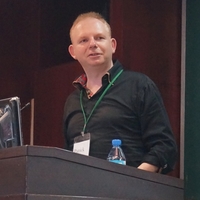


Uploads
Papers by Doç.Dr. Cengiz Kahraman
and effect, and it deals with space and human who uses it for economic purposes. What really matters in this
human-environment interaction is that benefits should become permanent and sustainable. This phenomenon is extremely
important for future generations if we desire them to continue to benefit from the geographical environment. When we look
at the current perception of the environment and the related application, the present state is not very encouraging. I’ll give
you a few examples; field grabbing race in polar regions under the pretext of researching, construction of technological
cities in desert areas, destruction of tropical forests for agriculture and settlement purposes, oil drilling practices in the
open seas, increasing presence of nuclear facilities and so on. Such human activities lead to irreversible damages to the
natural environment. Also due to misapplication of human activities such as settlement and industrialization, mankind
confronts such an unhealthy environment where the soil lost all contact with the sky, global warming, extreme pollution
in the atmosphere and hydrographic elements. With an effective environmental education, it is possible to prevent the
excessive and improper use which nature cannot compensate anymore. Ever-increasing world population creates the
biggest problem that prevents sustainable use of scarce resources. Undoubtedly protecting the natural environment
does not mean disuse. In this respect, the question of how to use the natural environment, how to plan and how to
ensure environmental awareness in large populations come to the fore. In order to answer these questions it is necessary
to know the structure and the properties of the natural environment for the first place. At this point, the place of
geography comes to the fore in an effective environmental education. This study emphasizes effective environmental
education, and attempts to explain the functions of the geography and how it should be utilized in environmental education.
⃝c 2016 KKG Publications.
Conference Presentations by Doç.Dr. Cengiz Kahraman
Books by Doç.Dr. Cengiz Kahraman
and effect, and it deals with space and human who uses it for economic purposes. What really matters in this
human-environment interaction is that benefits should become permanent and sustainable. This phenomenon is extremely
important for future generations if we desire them to continue to benefit from the geographical environment. When we look
at the current perception of the environment and the related application, the present state is not very encouraging. I’ll give
you a few examples; field grabbing race in polar regions under the pretext of researching, construction of technological
cities in desert areas, destruction of tropical forests for agriculture and settlement purposes, oil drilling practices in the
open seas, increasing presence of nuclear facilities and so on. Such human activities lead to irreversible damages to the
natural environment. Also due to misapplication of human activities such as settlement and industrialization, mankind
confronts such an unhealthy environment where the soil lost all contact with the sky, global warming, extreme pollution
in the atmosphere and hydrographic elements. With an effective environmental education, it is possible to prevent the
excessive and improper use which nature cannot compensate anymore. Ever-increasing world population creates the
biggest problem that prevents sustainable use of scarce resources. Undoubtedly protecting the natural environment
does not mean disuse. In this respect, the question of how to use the natural environment, how to plan and how to
ensure environmental awareness in large populations come to the fore. In order to answer these questions it is necessary
to know the structure and the properties of the natural environment for the first place. At this point, the place of
geography comes to the fore in an effective environmental education. This study emphasizes effective environmental
education, and attempts to explain the functions of the geography and how it should be utilized in environmental education.
⃝c 2016 KKG Publications.